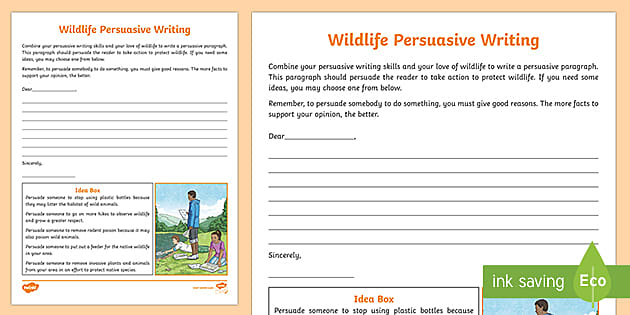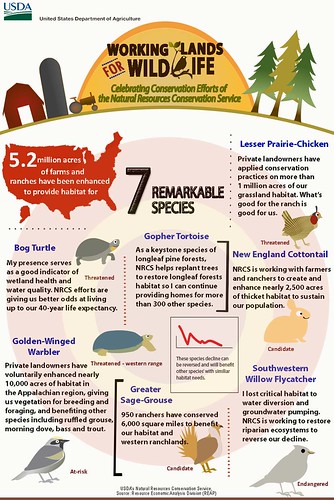
Introduction
The purpose of a text about wildlife is to give information about the natural world and the animals that live in it. This information can be used to educate people about wildlife, to promote conservation efforts, or to simply entertain readers.
Wildlife texts can cover a wide range of topics, such as:
- The different types of wildlife that exist
- The habitats where wildlife lives
- The behaviors of wildlife
- The threats that wildlife faces
- The importance of wildlife conservation
Well-written wildlife texts are accurate, informative, and engaging. They can help readers to learn more about the natural world and appreciate the beauty and diversity of wildlife.
The Benefits of Learning About Wildlife
There are many benefits to learning about wildlife. Here are just a few:
- It can help us to appreciate the natural world. Wildlife is an important part of the natural world, and learning about it can help us to appreciate the beauty and diversity of life.
- It can teach us about the importance of conservation. Wildlife is facing many threats today, such as habitat loss, climate change, and poaching. Learning about wildlife can help us to understand the importance of conservation and how we can help to protect wildlife.
- It can help us to become more responsible citizens. When we understand the importance of wildlife and the threats that it faces, we are more likely to make choices that support conservation. For example, we may choose to support businesses that are committed to sustainable practices, or we may choose to donate to conservation organizations.
How to Write a Wildlife Text
If you are interested in writing a text about wildlife, here are a few tips:
- Choose a topic that you are passionate about. This will make the writing process more enjoyable and your text more engaging.
- Do your research. Make sure that your information is accurate and up-to-date. You can use books, websites, and scientific papers to do your research.
- Write for your audience. Consider your audience when choosing your topic and writing your text. If you are writing for children, for example, you will need to use simpler language and explain complex concepts in a way that they can understand.
- Be organized. Make sure that your text is well-organized and easy to follow. Use headings and subheadings to break up your text and make it easier to scan.
- Use clear and concise language. Avoid using jargon and technical terms that your readers may not understand.
- Proofread your work carefully. Before you publish your text, make sure to proofread it carefully for any errors in grammar, spelling, or punctuation.
Examples of Wildlife Texts
Here are a few examples of wildlife texts:
- Wildlife documentaries: Wildlife documentaries are a great way to learn about wildlife in a visually appealing way.
- Wildlife books: Wildlife books can cover a wide range of topics, from the natural history of wildlife to conservation issues.
- Wildlife nature blogs: Wildlife nature blogs are a great way to learn about wildlife from experts in the field.
- Wildlife articles: Wildlife articles can be found in newspapers, magazines, and online.
Conclusion
Wildlife texts are an important part of our culture. They can help us to learn about the natural world, appreciate the beauty and diversity of wildlife, and understand the importance of conservation. If you are interested in learning more about wildlife, I encourage you to read wildlife texts and to support conservation organizations.
Keyword Silo
Wildlife texts can be organized into a keyword silo to help readers find the information they are looking for. A keyword silo is a group of related keywords that are organized into a hierarchy. The most general keywords are at the top of the hierarchy, and the more specific keywords are at the bottom.
For example, a keyword silo for wildlife texts might look like this:
- Wildlife
- Types of wildlife
- Mammals
- Birds
- Reptiles
- Amphibians
- Fish
- Insects
- Wildlife habitats
- Forests
- Grasslands
- Wetlands
- Deserts
- Oceans
- Wildlife behaviors
- Feeding
- Mating
- Communication
- Migration
- Threats to wildlife
- Habitat loss
- Climate change
- Poaching
- Pollution
- Wildlife conservation
- Conservation organizations
- Conservation efforts
- Types of wildlife
By organizing wildlife texts into a keyword silo, readers can easily find the information they are looking for. For example, if a reader is interested in
WebOver the past few years, many of the editorials published in the Journal of Wildlife Management (JWM) concentrated on writing. Indeed, many of the editorials. WebThe main factors that affect the depth and breadth of disseminating relevant information on wildlife utilization include the participation of relatively influential opinion. WebWildlife Biology promotes a scientific basis for the conservation and management of wildlife and human-wildlife relationships. We adopt a broad concept of wildlife management to. WebWhy we protect wildlife. Animals and plants aren’t just valuable for their own sake – they’re also part of a wider natural environment that may provide food, shelter, water, and other. WebThe management of deer is an important ethical concern in many countries, generating ethical disagreements in which human preferences, concern for individual animals, the. WebTogether with partners at all levels, we transform markets and policies toward sustainability, tackle the threats driving the climate crisis, and protect and restore wildlife and their.
Wildlife Persuasive Writing Activity (Teacher-Made) – Twinkl

Source: twinkl.com
Seven Remarkable Creatures Benefiting from Habitat Enhancements on Working Lands | USDA

Source: usda.gov
LIFE APEX cycle displaying the connection between wildlife samples,… | Download Scientific Diagram

Source: researchgate.net
What Is The Purpose Of The Text A To Give Information About Wildlife, Essay Writing on Wildlife Conservation, 1.1 MB, 00:48, 12,230, Education in Second, 2023-03-22T05:30:02.000000Z, 2, Wildlife Persuasive Writing Activity (Teacher-Made) – Twinkl, twinkl.com, 315 x 630, jpg, , 3, what-is-the-purpose-of-the-text-a-to-give-information-about-wildlife
What Is The Purpose Of The Text A To Give Information About Wildlife.
Essay Writing on Wildlife Conservation
Wildlife Persuasive Writing Activity (Teacher-Made) – Twinkl
What Is The Purpose Of The Text A To Give Information About Wildlife, WebWhy we protect wildlife. Animals and plants aren’t just valuable for their own sake – they’re also part of a wider natural environment that may provide food, shelter, water, and other. WebThe management of deer is an important ethical concern in many countries, generating ethical disagreements in which human preferences, concern for individual animals, the. WebTogether with partners at all levels, we transform markets and policies toward sustainability, tackle the threats driving the climate crisis, and protect and restore wildlife and their.
Essay Writing on Wildlife Conservation

Source: Youtube.com
Essay on Conservation of wildlife || 10 lines on conservation of wildlife || Conservation essay ||

Source: Youtube.com
Understanding Conservation | National Wildlife Federation
Learn how animals, plants, and habitats rely on their ecosystems, and why conservation efforts are vital to protecting them. .
.
Wildlife Conservation | National Geographic Society
Wildlife conservation aims to protect plant and animal species as the human population encroaches on their resources. .
Text Types and Different Styles of Writing: The Complete Guide
Learn to write a variety of text types in the classroom. Different types of writing styles and genres for students and teachers. Resources for students and teachers. .
GVC1702 – Importance of Wildlife
The importance of wildlife can be categorized as ecological , economic and investigatory importance as well as conservation of biological diversities etc . Animals have also been highly useful to us in providing food , clothing and source of income . Our life is almost impossible without the , .
Wildlife Conservation | Initiatives | WWF
Saving nature is at the very heart of what we do as WWF. For 60 years, we have made it our mission to find solutions that save the marvelous array of life on our planet by applying the best science available and working closely with local communities. But our work is far from done. .
Wildlife Conservation
Wildlife conservation aims to protect plant and animal species as the human population encroaches on their resources. .
Wildlife – Wikipedia
Wildlife tourism is an important part of the tourism industries in many countries including many African and South American countries, Australia, India, Canada, Indonesia, Bangladesh, Malaysia, Sri Lanka and Maldives among many. It has experienced a dramatic and rapid growth in recent years worldwide and many elements are closely aligned to eco-tourism and sustainable tourism. According to United Nations World Tourism Organization, with an annual growth about , .
.
Different types of writing – text types English help pages: Different types of writing – text types .
Evaluating the Author’s Purpose in a Given Text: TEAS
Guide to help understand and demonstrate Evaluating the Author’s Purpose in a Given Text within the TEAS test. .
What You Can Do for Wildlife | Animal Welfare Institute
Sign up for action alerts from AWI, which keep you informed about urgent animal protection issues and provide quick and easy ways to get in touch with policymakers. Check out AWI’s publications about various wildlife protection issues, and share the publications with others. Visit AWI’s Action Center to take action on current action alerts. Plant native species of flowers, trees, and bushes in your yard. This gives , .
Wildlife Guide | National Wildlife Federation
Learn about our nation’s wildlife, the threats they face, and the conservation efforts that can help. .
What is Informational Text?
Informational text is a subset of the larger category of nonfiction. Its primary purpose is to inform the reader about the natural or social world. .
Wildlife Conservation Projects – ClearIAS
Wildlife Conservation projects aim to preserve and use natural resources in a sustainable manner to ensure that future generations can benefit .
Wildlife conservation – Wikipedia
Monitoring of wildlife populations is an important part of conservation because it allows managers to gather information about the status of threatened species and to measure the effectiveness of management strategies. Monitoring can be local, regional, or range-wide, and can include one or , .
What is the purpose of tagging wild animals? | Marcas Alares
Tags can give detailed information on home range size and core habitat characteristic. Home range is the area in which the animal spends it’s time and core range is the area within the home range it utilises intensively. Capturing an animal to tag it also gives scientists the opportunity to take blood samples that they would never otherwise get which is very useful as, for example, you can find out more about , .
Wildlife | Encyclopedia.com
Chapter 3Wildlife Wildlife are animals that have not been domesticated by humans. This does not mean that wild animals live without human interference. Humans control, manage, manipulate, use, and kill wildlife for various reasons. .
A brief Introduction to Wildlife conservation
This article describes wildlife conservation in detail. We have also presented information on Prevention of wildlife from extinction, wildlife conservation, and much more. .
Post a Comment